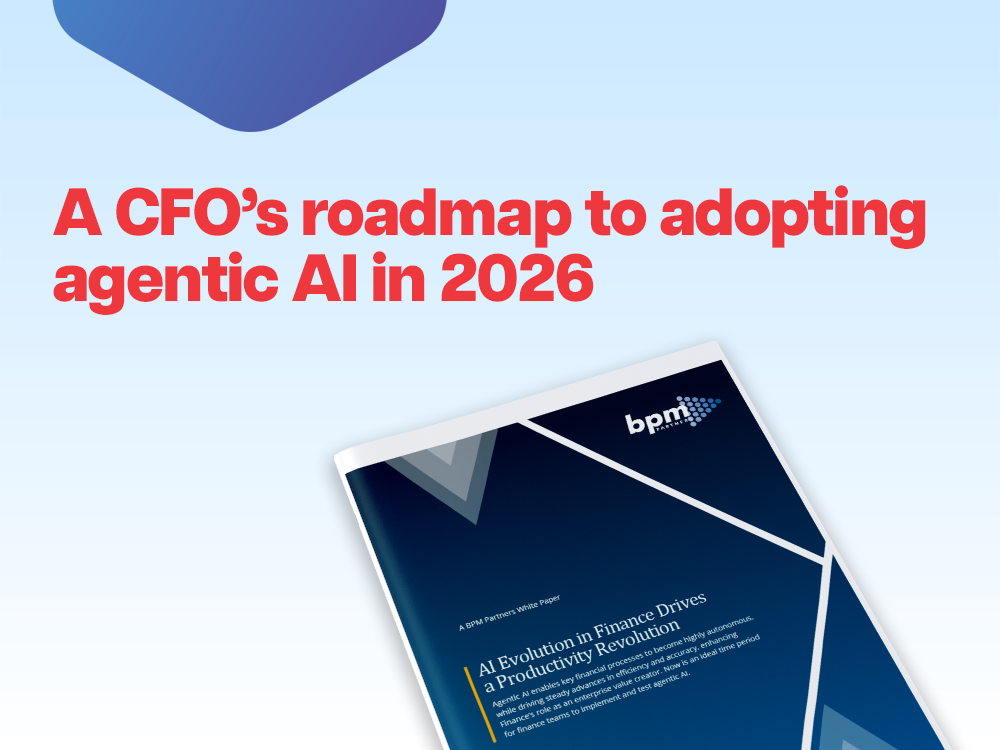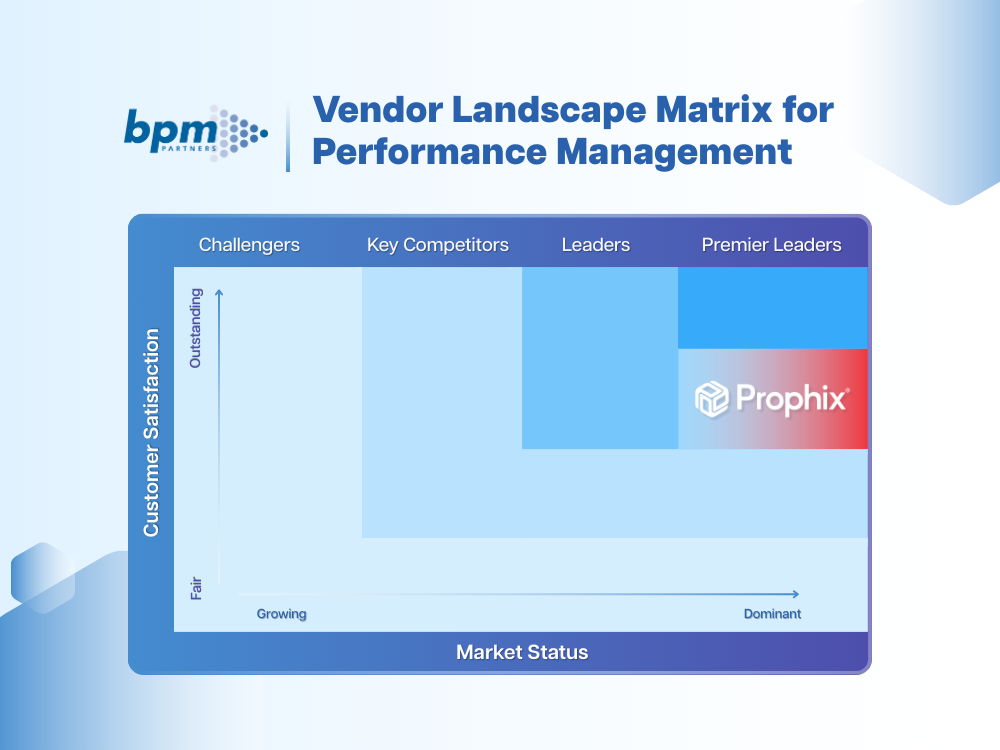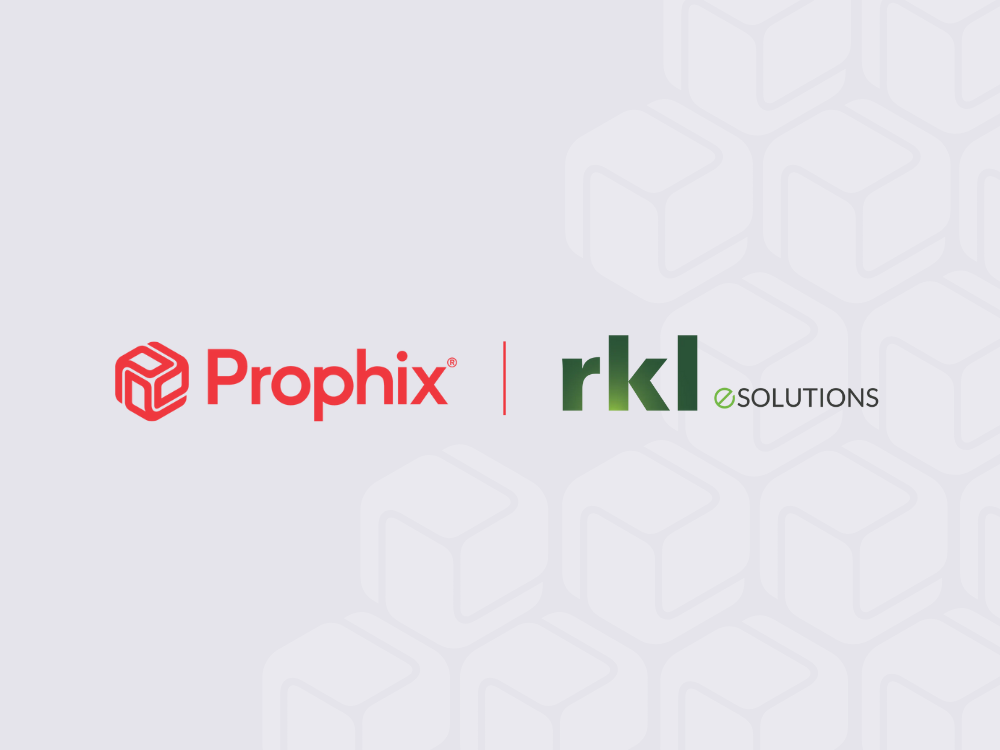Download the BPM Partners Whitepaper
Top 3 finance trends for 2025 with Prophix CEO Alok Ajmera
We chatted with Prophix CEO Alok Ajmera to get some insights on how businesses and corporate leaders can embrace change in the year to come.
December 18, 2024A new year always brings new challenges, opportunities, and prospects for growth. As we stand on the brink of 2025, business and finance leaders find themselves at the helm of this transformative journey, navigating through a changing market landscape.
We chatted with Prophix CEO Alok Ajmera to get some insights on how businesses and corporate leaders can embrace change in the year to come. And we asked him to gaze into the crystal ball to predict some of the emerging storylines that will shape the finance and business sectors in 2025.
Businesses stay on the defensive – for now
As Ajmera discussed at the end of last year, the corporate buzzword for 2024 was “business optimization” - a term that continues to take on multiple forms when put into practice. Many approached business optimization with an eye towards finding the ideal balance of sustainability and profitability. Companies invariably put effort into streamlining around the fringes – addressing areas like supply chain, vendor relationships, or employment costs - to eke out incremental EBITDA, profit, and cash flow.
This streamlining is predicted to continue into 2025, as economic and geopolitical uncertainty make growth considerably harder to anticipate. As growth slows down, companies orient around optimization.
“If your growth is coming down, most businesses aren’t leaning in and spending – they're getting a little more defensive and protecting margin. The tech space, as the clearest example, went from frothy growth, to concern around growth, to now more of a defensive position around growth,” he noted.
“Outside of tech, you can see it with all kinds of businesses that choose to either be in high growth mode, in which case they can plan for and manage lower profitability, or they want lower growth and higher profitability. The struggle is that when growth is hard to come by, you fear that mushy middle of low growth and low profitability. Organizations that have historically leaned heavily into growth are either going to have to be more creative to figure out how to sustain it, or they’re going to have dig much deeper into optimization.”
He also notes that with interest rates beginning to drop, cash is becoming slightly more fluid entering 2025. This could lead to businesses bringing on some additional debt to fuel growth and should free up the M&A market.
“Again, if growth is getting harder to come by, then you need to optimize. If cash is a little cheaper to get from a debt perspective, that can fund creativity on how to spark inorganic growth and that will ultimately drive M&A.”
Planning moves past the P&L
As organizations have tightened up in recent years, particularly from a financial perspective, planning technology has seen more widespread adoption. The pandemic and its aftermath only heightened the need for more advanced financial planning capabilities and the trend will likely continue into 2025. But to truly get the most out of planning technology, according to Ajmera, organizations are more likely than ever to break down every line in their P&L and start to focus on the operational drivers that are having an influence on financial output.
“As you start seeing these organizations that are trying to draw a fraction of percentage points of optimization, data and data modeling becomes incredibly important, and not just at a P&L or a balance sheet level – it's actually done at a very granular operational level ,” he notes. “Part of the benefit is that it connects the broader organization together so there’s clear alignment within the organization around the key drivers and how it actually translates into financial performance. Really understanding where costs are, what’s driving the margin, what’s potentially putting downward pressure on the margin, and where more thoughtful, corrective action can be taken.”
In addition to both financial and operational planning challenges, senior leaders should be prepared for a more complicated, and sometimes chaotic, business environment for the near future. Economic tailwinds have helped steer many organizations towards profitability, often in spite of themselves and their markets. Ajmera warns that it’s likely businesses will have a more difficult time sustaining that success in the next 5-10 years and that corporate leaders will quickly reach a pivotal point: those that have done well because the conditions have made it nearly impossible to fail, and those that have put in the work to structure their businesses for long-term success.
“We’re at an inflection point where I think a lot of organizations are going to struggle,” said Ajmera. “But that will create opportunities for those that are prepared to really lean in and find ways to continue to propel ahead. It is going to be harder in this cycle, though, and it will really require a mindset shift.”

Creating value across the organization
What can business leaders do to ensure they aren’t left behind? Here are four tips to consider as we move ahead into the new year.
Embrace higher quality data
“Even today, it’s shocking to me – the quality of data within organizations still tends to be poor. That just leads to poor instrumentation, poor understanding of the actual mechanical drivers of a business, and an inability to make really crisp, sharp, timely decisions. As conditions get tougher, those pieces of quality data are going to be difference makers.”
Treat AI for what it is – an opportunity and a threat
Clearly we’ve lived through an entire hype cycle and back when it comes to artificial intelligence. Sentiment has evolved from ‘this will change everything, and no one is going to have a job anymore’ to ‘it’s not that big of a deal.’ As Ajmera states, that’s a real risk for business leaders who are potentially shrugging off AI in the immediate.
“Look 25 years and beyond – AI will be fundamentally disruptive to every single person in the world,” he says. “Every business leader should be digging in and doubling down to understand what is happening from an AI/ML perspective. How can every individual in your organization think about AI and start utilizing it from a productivity perspective? And then most importantly, how do you think it’s going to impact your end customer? Is your business disruption-proofed against what your end customer will do?”
Think critically about organizational talent and communication
Again, with a more difficult road ahead for businesses, Ajmera recommends taking a more careful look at the people and skill sets within the leadership suite to ensure alignment. Employees need to be in harmony with the data in the organization, enabling it to use more advanced tools to extract insight, drive decision-making and help the business grow.
Unplug for your sake and everyone else’s
Everyone from business leaders to casual news consumers are being bombarded with content on an almost constant basis – often consuming information from the moment we wake up to the moment we go to bed. For Ajmera, finding the opportunity to unplug and think is absolutely critical.

2025 is full of limitless possibilities
As we look ahead into the new year, the possibilities are limitless. Continued optimization, advanced planning, creating more value for the organization, and building connections will help finance teams and their businesses see what’s possible.
As for some parting advice: “Part of my resolution for 2025 is really ensuring that I carve out time to think about my business, my family, my health, and to make connections – to understand and digest things that I’m consuming instead of just inhaling them. I would throw that out as a challenge to anyone – it's vitally important to have some time to let your brain be at peace for however long you can give it.”
Insights for next-gen finance leaders
Stay ahead with actionable finance strategies, tips, news, and trends.





